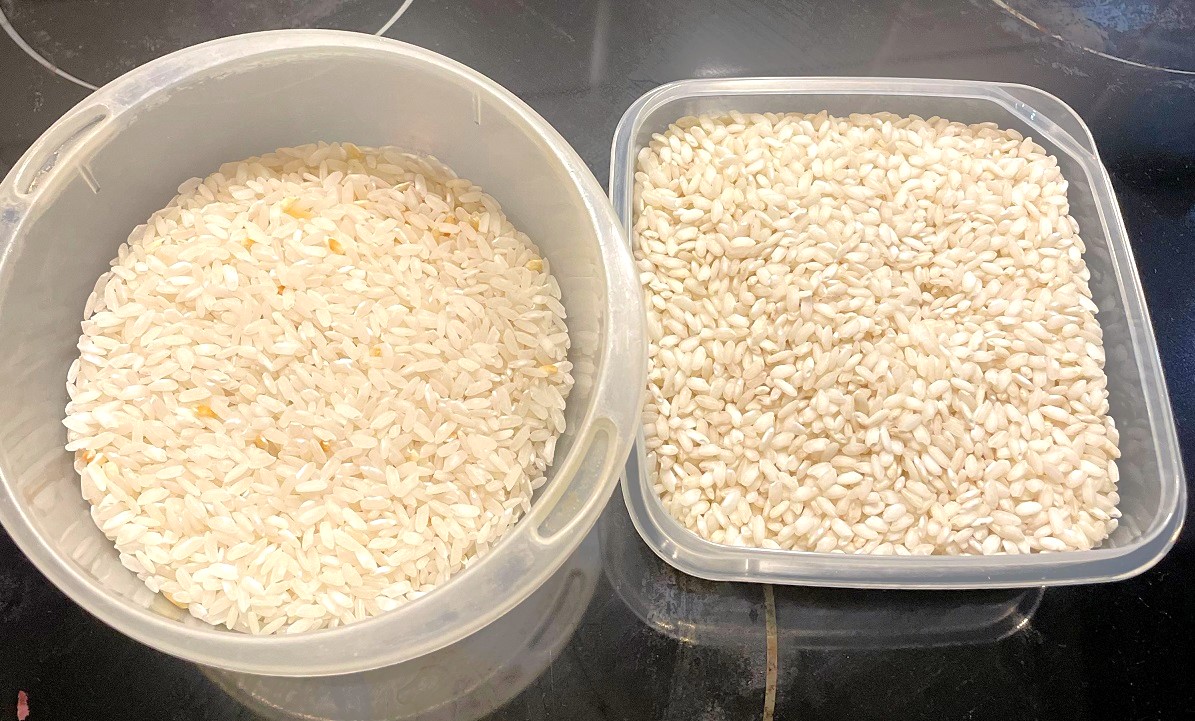Last Updated on January 23, 2025 by Karen
This post will cover some common questions about sushi rice, such as how much to use per roll, the best ways to store it, and creative ideas for using leftovers.
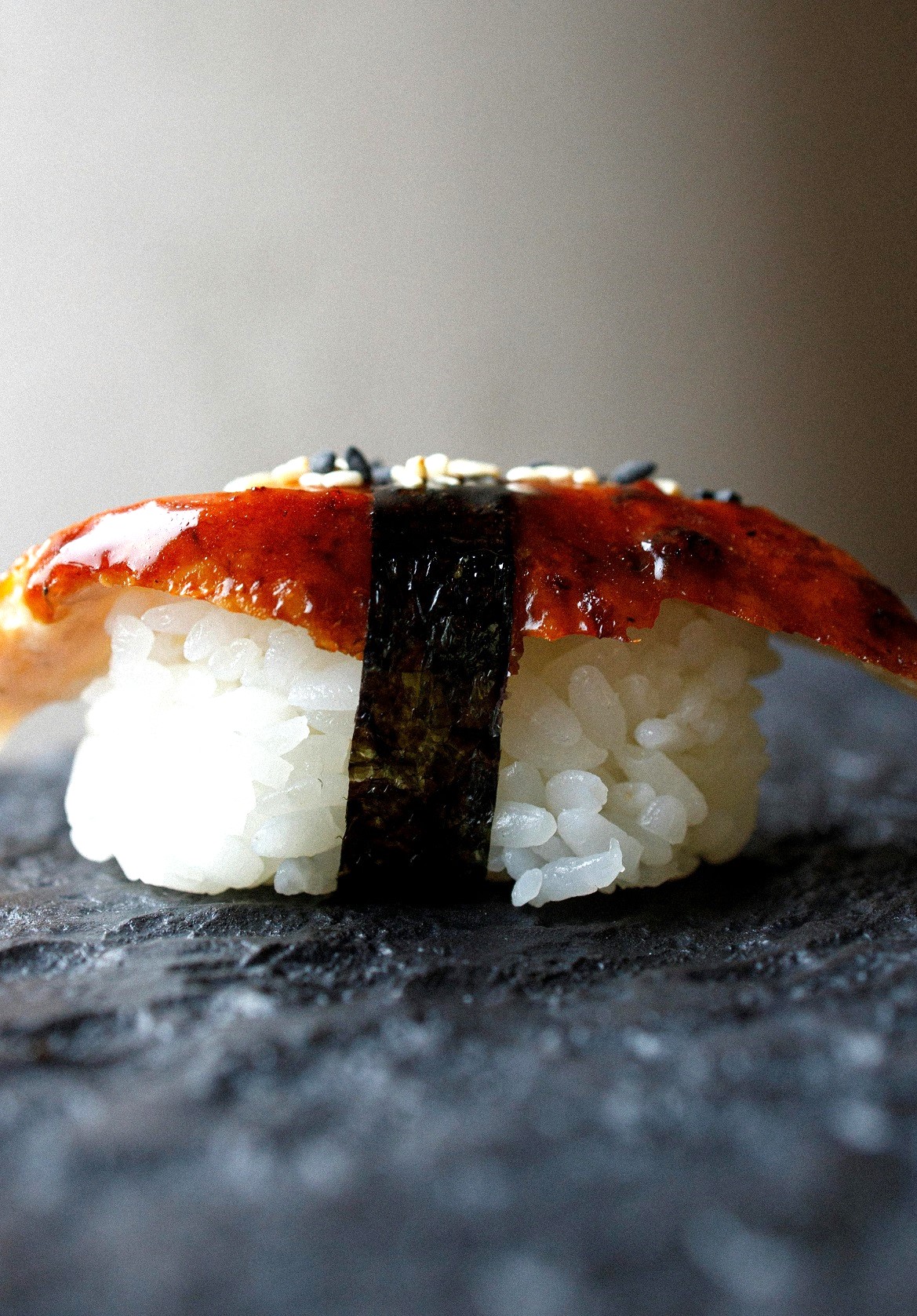
Sushi rice, or “shari” in Japanese, is an essential component of sushi. The perfect sushi rice is sticky, flavorful, and perfectly seasoned to complement the fresh fish and other ingredients. In this post, we’ll answer some common questions about sushi rice, from how much you need per roll to how to store it and what to do with leftovers.
How Much Sushi Rice Do You Need Per Roll?
Typically, you’ll need about 1/4 to 1/3 cup of cooked sushi rice per sushi roll (makimono). If you’re making a standard roll, such as this Spicy California Roll, this amount should provide enough rice to cover the nori (seaweed) and leave some room for the other ingredients. Keep in mind that the rice should be spread evenly and not packed too thickly. Overstuffing your roll can lead to difficulty in rolling and uneven texture.
How Long Does Sushi Rice Last in the Fridge?
Sushi rice can last in the fridge for about 3 to 4 days when stored properly. After this time, the rice may become drier and lose its sticky texture. To maintain the rice’s moisture and quality, it’s essential to store it in an airtight container and ideally eat it within 24 hours for the best taste and texture.
How to Keep Sushi Rice Fresh Overnight?
To keep sushi rice fresh overnight, follow these tips:
Cool it to room temperature: Never store hot rice directly in the fridge as it can develop moisture and affect the rice’s texture.
Wrap the rice in plastic wrap: If you don’t plan on using it right away, tightly wrap the sushi rice in plastic wrap or place it in an airtight container.
Cover with a damp towel: Placing a damp paper towel over the rice before sealing the container can help maintain some moisture.
However, keep in mind that sushi rice is best enjoyed the same day it’s made, as its texture changes over time.
How to Store Leftover Sushi Rice?
To store leftover sushi rice, first allow it to cool to room temperature. It’s important not to refrigerate hot rice, as it can cause condensation and make the rice soggy. Once cooled, transfer the rice to an airtight container to prevent it from drying out or absorbing any unwanted odors from the fridge. You can also wrap the rice tightly in plastic wrap if you don’t have an airtight container. Store it in the refrigerator, where it should last for about 3 to 4 days.
When you’re ready to use it, you can reheat the rice by microwaving it with a splash of water to restore moisture, or by steaming it gently. Keep in mind that sushi rice doesn’t retain its ideal texture after being stored, so it’s best enjoyed as fresh as possible.
Can You Freeze Sushi Rice?
Yes, you can freeze sushi rice, but it may lose some of its original texture when thawed. If you want to freeze it:
Cool the rice: Let the rice cool completely before freezing.
Portion it out: Divide the rice into smaller portions so you can easily defrost only what you need.
Use a freezer-safe container: Place the rice in a freezer-safe bag or airtight container. It should keep well for 1 to 2 months.
When you’re ready to use it, defrost the rice in the fridge overnight or heat it up in the microwave with a bit of water to restore moisture.
Does Sushi Rice Have Sugar?
Yes, sushi rice contains sugar. The sugar, along with salt and rice vinegar, is part of the seasoning mix that gives sushi rice its signature sweet-salty flavor. Typically, the sugar content is about 1-2 tablespoons per cup of cooked rice, depending on your preference.
How to Make Sushi Rice Without Rice Vinegar?
If you don’t have rice vinegar, you can still make sushi rice by using alternatives that provide the necessary acidity and sweetness:
Use white vinegar: Substitute rice vinegar with a mild white vinegar.
Add sugar and salt: Mix a bit of sugar and salt into the white vinegar to mimic the sweet-salty taste of sushi rice.
Apple cider vinegar: As another option, you can use apple cider vinegar for a slightly different flavor.
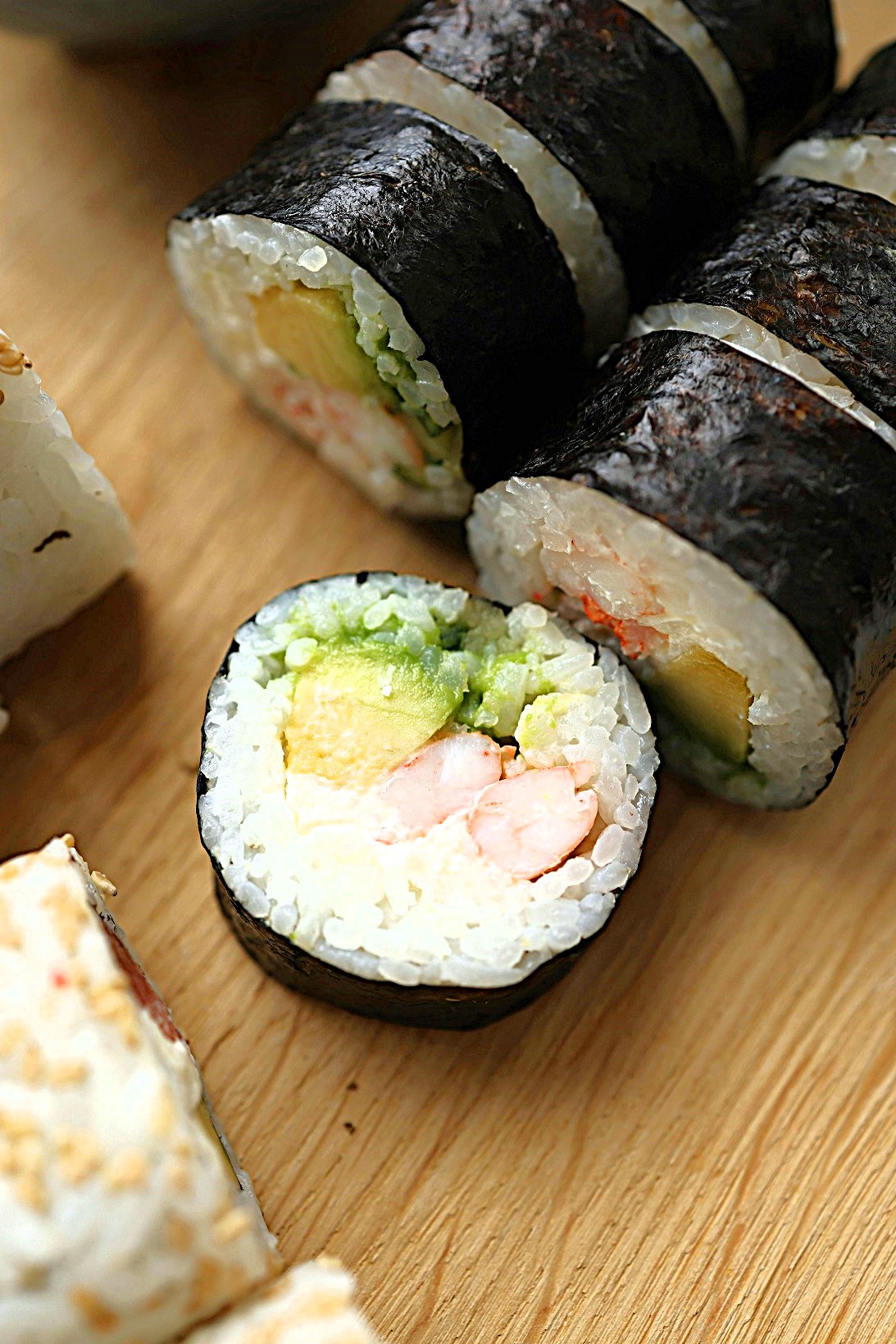
Sushi Rice Recipe with Mirin
If you’re looking for a sweet twist, mirin (a sweet rice wine) can be used to season your sushi rice. To make sushi rice with mirin, start by rinsing 2 cups of sushi rice under cold water until the water runs clear. Next, combine the rinsed rice with 2 cups of water in a rice cooker, and cook it according to the manufacturer’s instructions
. While the rice is cooking, prepare the seasoning by mixing 2 tablespoons of mirin, 1 tablespoon of rice vinegar, 1 tablespoon of sugar, and 1 teaspoon of salt in a separate bowl. Microwave the mixture for about 20 seconds or until the sugar dissolves. Once the rice is fully cooked, gently fold the seasoning mixture into the rice while it’s still warm.
Allow the rice to cool to room temperature before using it for your sushi rolls or other dishes. This recipe creates a subtly sweet and tangy sushi rice that’s perfect for any sushi preparation.
What Are Some Substitutes for Sushi Rice?
If you don’t have sushi rice, you can use alternatives, though they won’t have the same sticky consistency or subtle flavor. Here are a few options:
Short-grain rice: It has a similar sticky texture and can be used as a substitute.
Arborio rice: Though typically used for risotto, arborio rice can work in a pinch.
Glutinous rice: This is another good substitute, though it’s stickier than sushi rice.
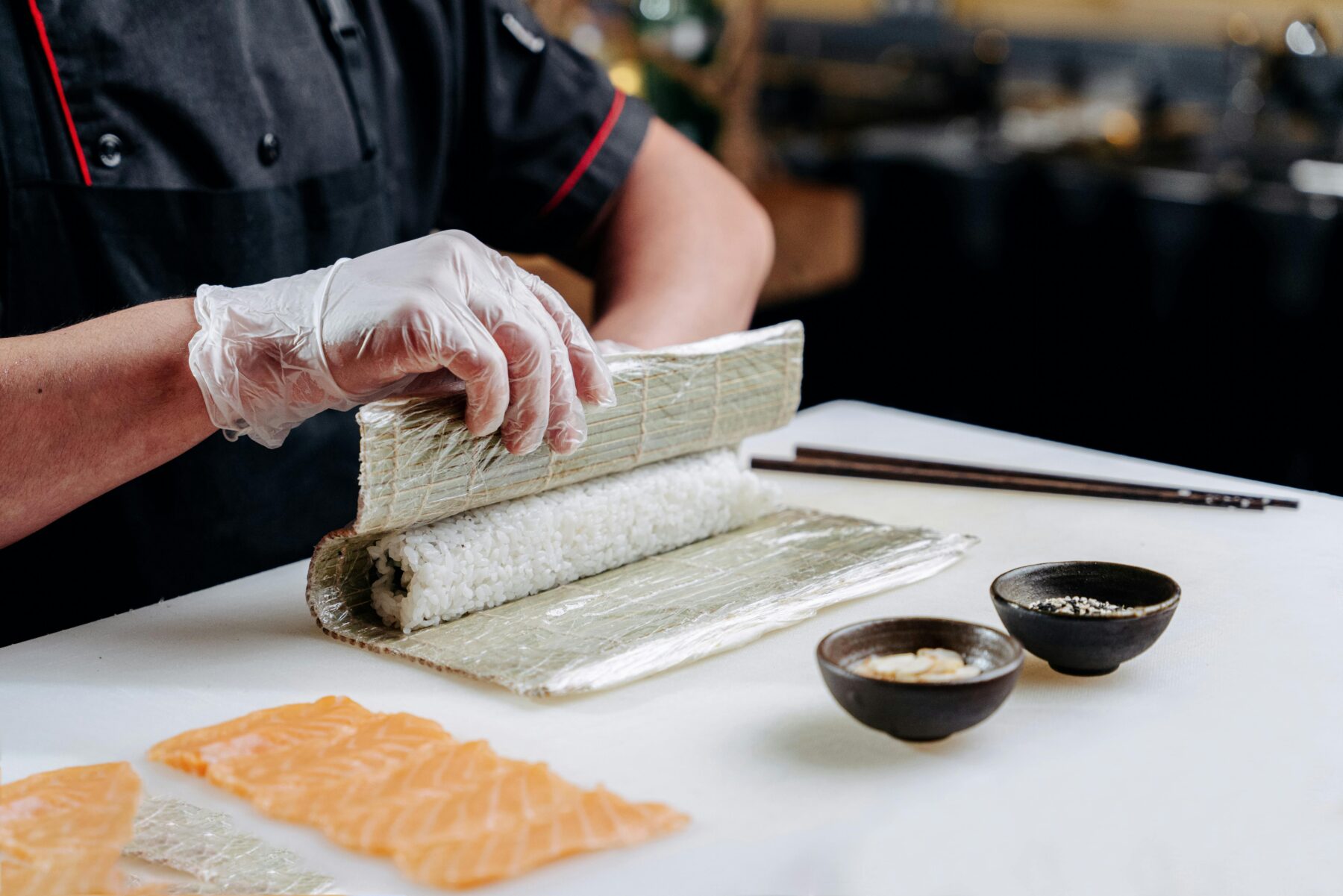
Lundberg Sushi Rice Recipe
Lundberg sushi rice is a popular brand known for high-quality short-grain rice. To cook it, you can follow these simple steps:
Rinse the rice under cold water until the water runs clear.
Cook the rice: Combine 1 cup of Lundberg sushi rice with 1 1/4 cups of water. Cook it in a rice cooker or on the stovetop until fully cooked.
Season: Once cooked, season the rice with a mixture of rice vinegar, sugar, and salt, then cool to room temperature.
Is Sushi Rice Gluten-Free?
Yes, sushi rice is naturally gluten-free. The rice itself contains no gluten, and the seasoning typically involves rice vinegar, sugar, and salt—none of which contain gluten. However, always check for any hidden sources of gluten in the ingredients, such as certain sauces or pre-packaged seasonings.
Steamed Sushi Rice Stovetop Method and in Rice Cooker
Stovetop method:
- Rinse 1 cup of sushi rice under cold water.
- Place the rice in a pot with 1 1/4 cups of water. Let it sit for 30 minutes to an hour.
- Bring the water to a boil, then reduce the heat to low and cover the pot.
- Let the rice steam for about 20 minutes, then remove it from the heat and let it sit, covered, for another 10 minutes.
Rice cooker method:
- Rinse the rice until the water runs clear.
- Add the rice to the rice cooker with 1 1/4 cups of water per cup of rice.
- Cook according to the rice cooker’s instructions.

How to Make Sushi Rice for Poke Bowl
To make sushi rice for a poke bowl, simply cook your sushi rice as usual and season it lightly with rice vinegar, sugar, and salt. The rice should be slightly sweet and tangy, providing a nice base for the poke ingredients like fish, vegetables, and sauces.
How to Reheat Sushi Rice
If you need to reheat sushi rice, sprinkle a little water over it and then cover it with a damp paper towel. Microwave it for 20-30 seconds, checking to ensure it doesn’t dry out. Alternatively, you can reheat the rice in a steamer or a saucepan with a tiny bit of water on low heat.
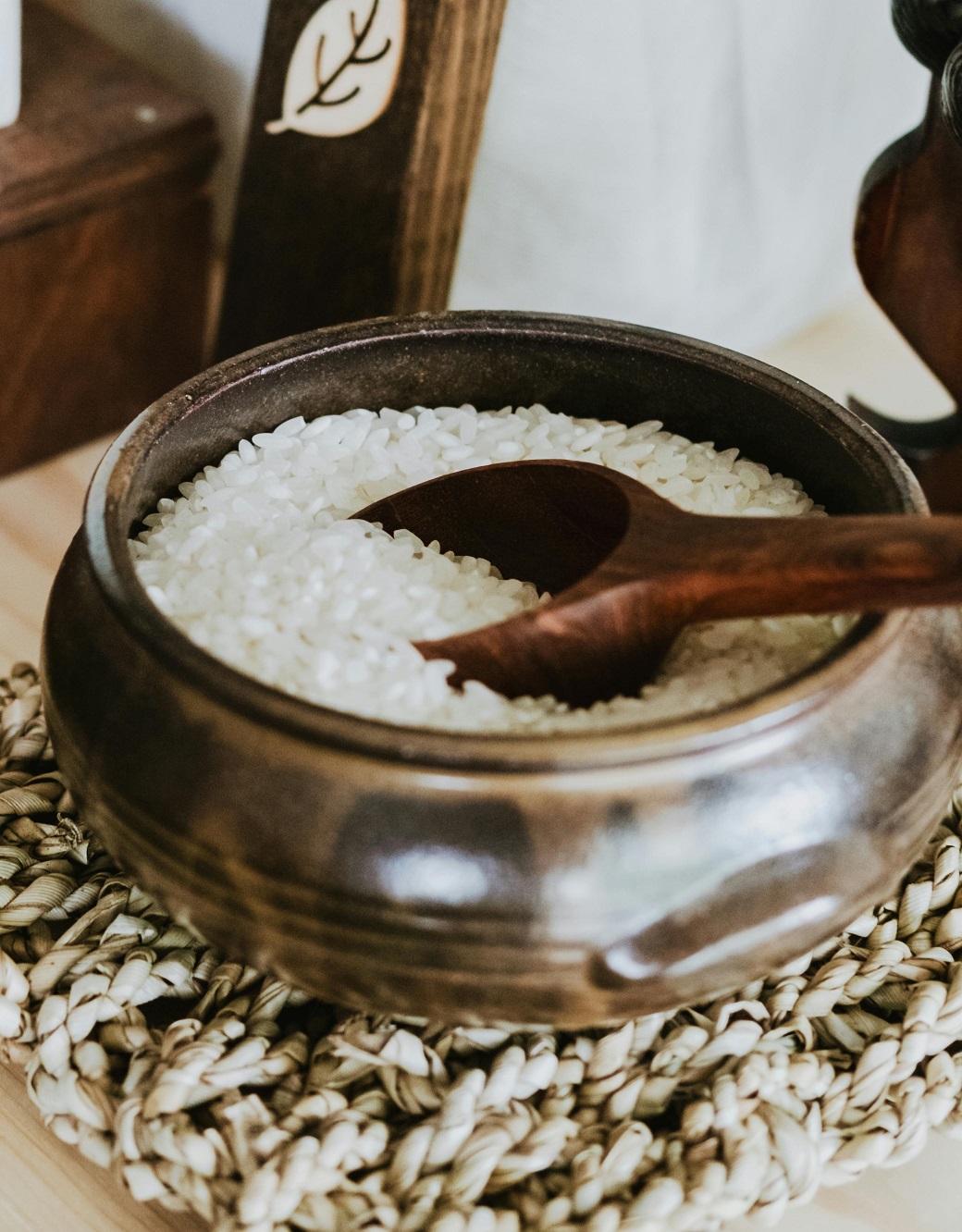
What to Do with Leftover Sushi Rice (Leftover Sushi Rice Recipes)?
Leftover sushi rice can be used in various creative ways:
Sushi bowls: Top the rice with cooked fish, vegetables, and sauces like yum yum sauce for a sushi bowl.
Onigiri (rice balls): Shape the rice into rice balls and fill them with pickled vegetables or fish.
Fried rice: Stir-fry the rice with vegetables, scrambled eggs, and a bit of soy sauce for a quick meal.
Rice pudding: Use the rice in a sweet rice pudding by adding coconut milk, sugar, and a touch of cinnamon.
Sushi rice is versatile, and if stored and used creatively, you can enjoy it in many different ways!
